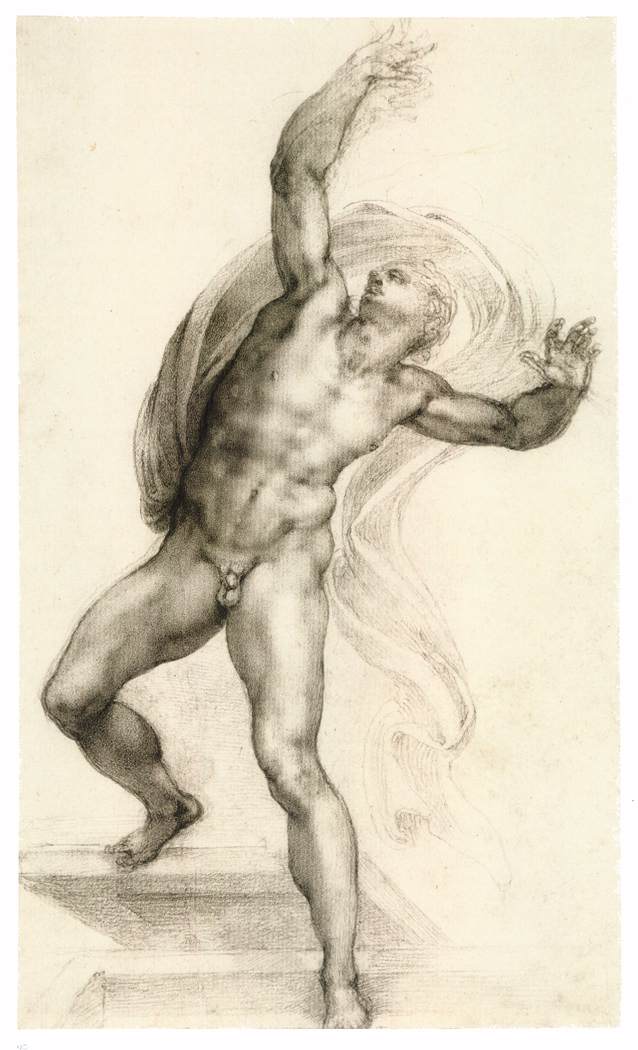
The Resurrection (recto)
1531-32
Black chalk, traces of red chalk, 240 x 347 mm
Royal Collection, Windsor
This drawing is probably connected with the commission for the Medici Chapel in Florence. It was proposed that the drawing was a study for a painting in the lunette above the double tomb of the Magnifici at the entrance wall of the chapel. Given its pyramidal structure, the composition is suitable for a lunette. A fresco of the subject would have been required by the dedication of the chapel to the Resurrection.

c. 1530
Red chalk, 152 x 171 mm
Musée du Louvre, Paris
This representation is a rarity in Italian art in that it depicts the exact moment that Christ rises from the tomb. Although it is only a drawing, the arresting contrast between the soldiers, either cowering on the tomb or fleeing in horror, and Christ at the moment of his resurrection is still unmistakable. Without leaving the realms of the natural, the upwards movement towards the light symbolizes the Resurrection of the Redeemer.

The Resurrection (recto, detail)
1531-32
Black chalk, traces of red chalk
Royal Collection, Windsor
Christ is seen freeing himself into the air, amidst the amazement and dismay of the soldiers who flee as if pushed outward by relentless thrust of energy.

The Risen Christ
1532-34
Black chalk, 325 x 190 mm
Casa Buonarroti, Florence
This study belongs to Michelangelo's compositions of the Resurrection of Christ. Although there are several other assumptions, these drawings were probably studies for a painting in the lunette above the double tomb of the Magnifici at the entrance wall of the Medici Chapel in Florence. In the present study the artist repeatedly changed the posture of the legs, obviously having different solutions in mind. The drawing anticipates the posture of Christ in the Last Judgment in the Sistine Chapel.

The Risen Christ
1532-34
Black chalk, traces of stylus, 373 x 221 mm
Royal Collection, Windsor
This drawing is one of Michelangelo's most beautiful single-figure studies and a masterpiece of draftsmanship. It is stylistically closely related to the drawings that Michelangelo presented as gifts to his friend Tommaso de' Cavalieri (The Punishment of Tityus and the Fall of Phaethon). It was probably a presentation drawing that the artist created for a specific project.